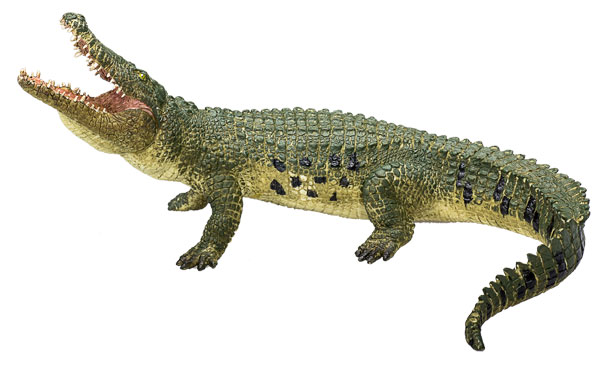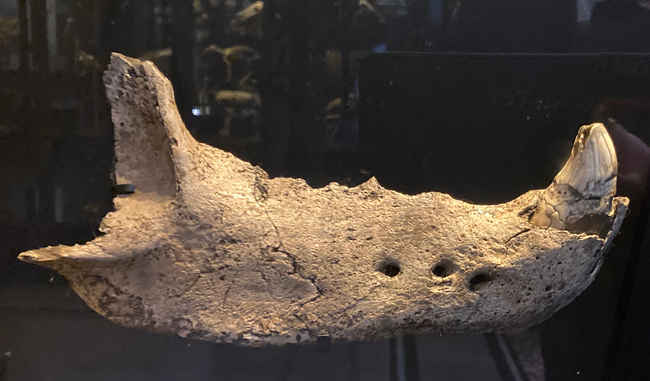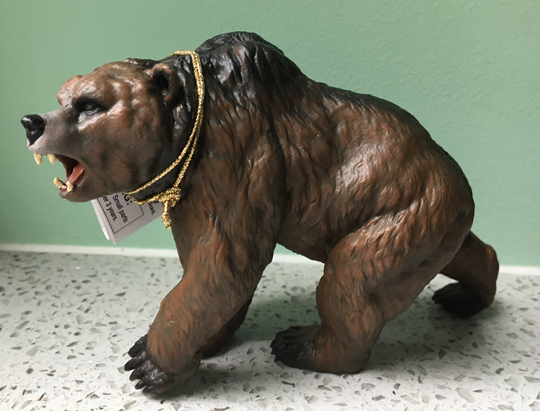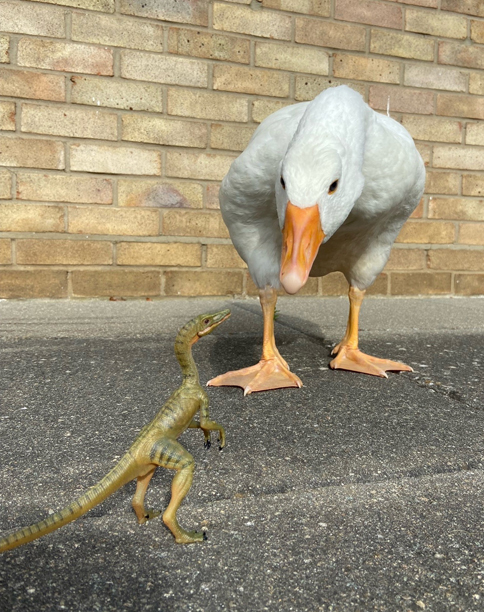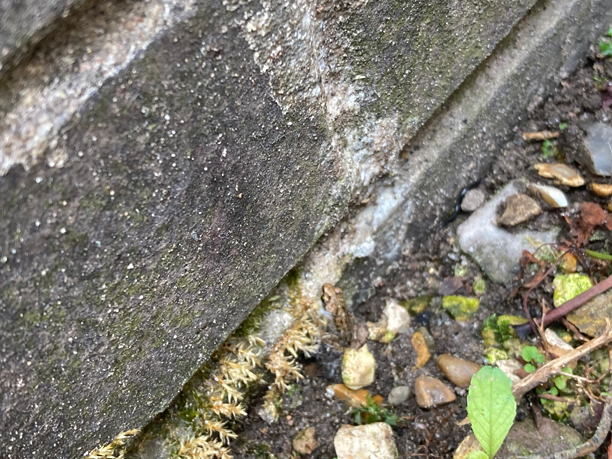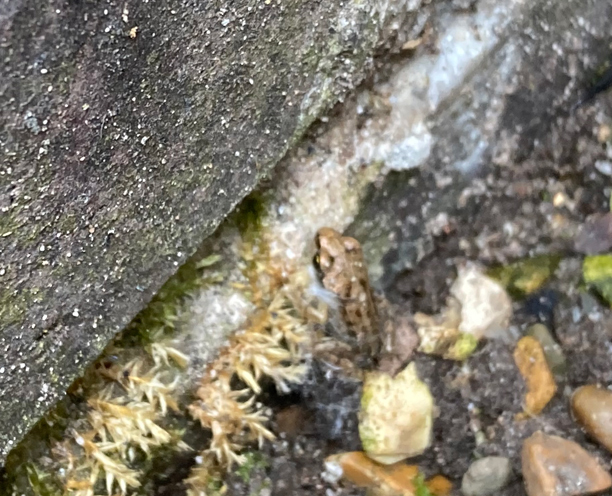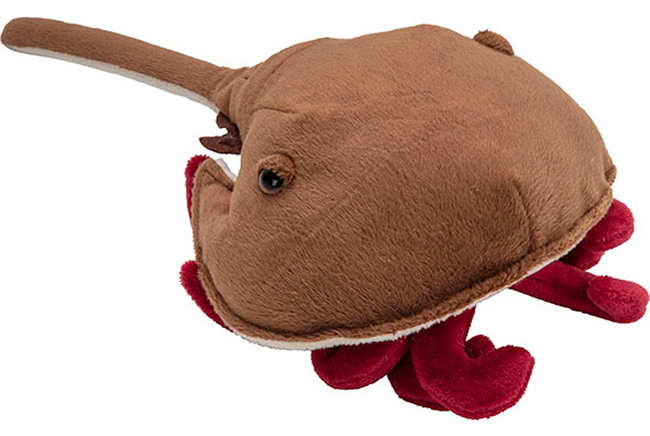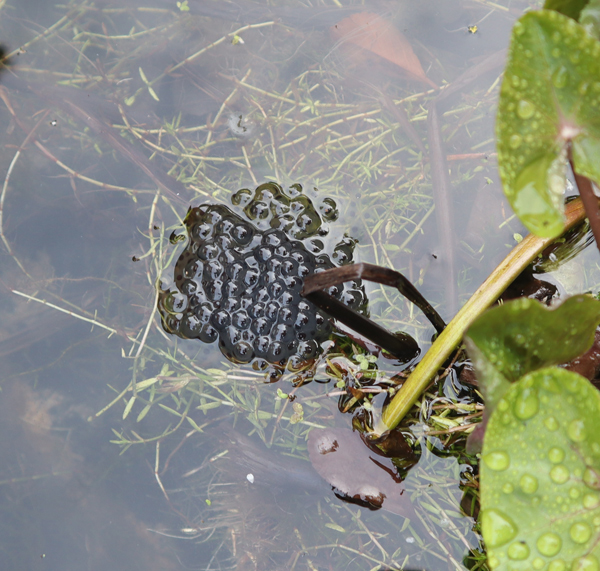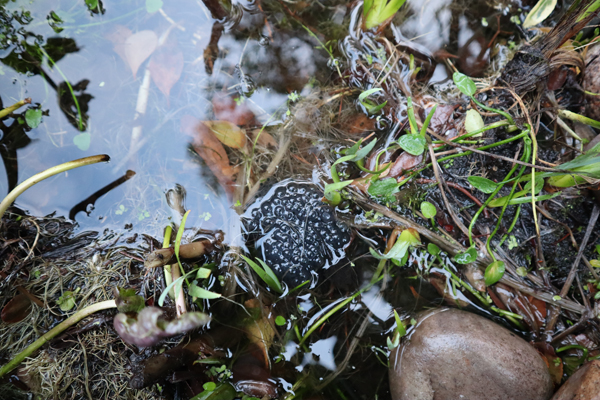News stories and articles that do not necessarily feature extinct animals.
Common Frog Observed in the Office Pond
Team members at Everything Dinosaur observed a small Common frog in the office pond this evening. It could be from the frogspawn laid in February. This year (2023), was the first year that frogspawn had been laid in the pond during the month of February. The first batch of frogspawn was produced on February 28th.
In the late evening, a small Common frog was observed in the pond. It was much larger than the froglets that had been seen recently. It could be a frog that is at least twelve months old. Perhaps, it is a well-fed adult that metamorphosed from this year’s spawn.

Picture credit: Everything Dinosaur
A Common Frog (Rana temporaria)
Team members have been busy helping to improve the small office pond. Native pond weed was purchased and introduced to help reduce the level of algae and to oxygenate the water. Pebbles have been added to the shallows to permit easier access for birds that want to bathe.
Two different types of pond snail (Great Ramshorn and Great Pond Snail) have been added. These snails Lymnaea stagnalis and Planorbarius corneus respectively, were removed from a local ditch that had recently been cleaned out. With little to eat in the ditch, ten Great Ramshorns were taken along with four Great Pond Snails and added to the office pond. By removing some snails from the ditch, this would help that ecosystem as well as permitting a small population of snails to assist with managing the algae in the office pond.
Invertebrate life is thriving and recently Backswimmers (Notonecta) have repopulated the pond.
All these invertebrates and the abundance of vegetation in and around the shallow pond have made an ideal habitat for frogs.
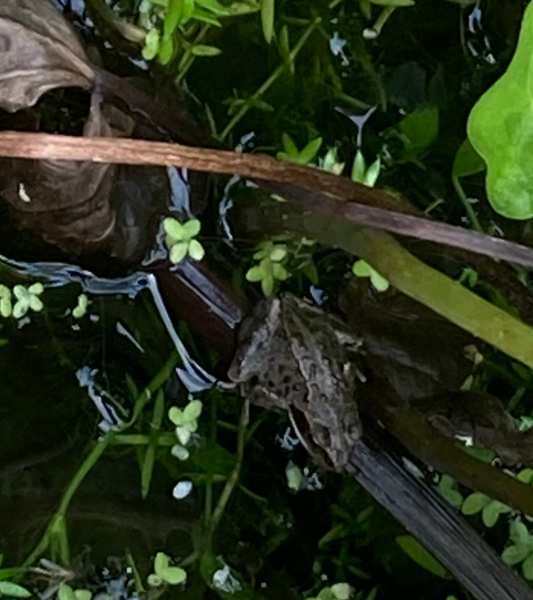
Spotting a Frog
We are not sure whether the small frog we spotted is from this year’s frogspawn. However, if the frogspawn was laid early in the season, then the frogs once they have emerged from the pond, would have a longer growing season. So, it is possible that this year’s frogs would have grown to the size of the one photographed. There is certainly plenty for the frogs to eat and lots of places for them to hide.
Team members will continue to work hard to keep the office pond healthy and its inhabitants happy.
Visit the award-winning Everything Dinosaur website: Everything Dinosaur.


